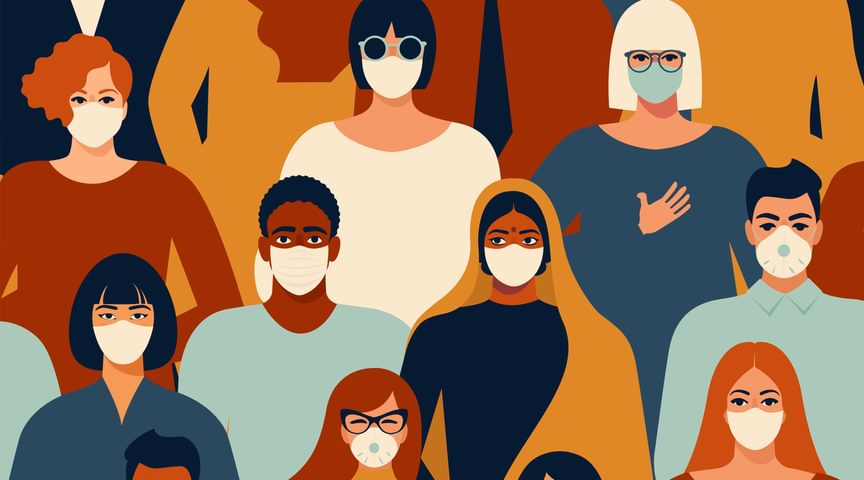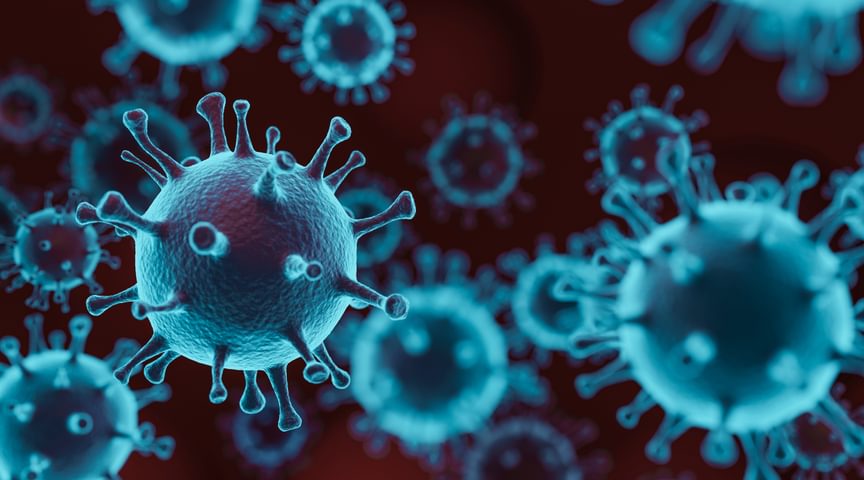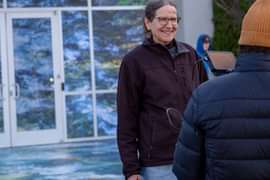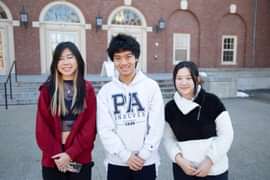
March 26, 2020
Tracking a pandemic: A conversation with virologist Don Ganem, MD, ’68
Expert insights into COVID-19by Rita Savard
From a bustling campus here at Andover to enjoying simple pleasures like real face time with friends, reality has changed the world over in what seems like the blink of an eye. In the weeks since the presumed first U.S. COVID-19 patient landed at Seattle-Tacoma International Airport on January 15, we’ve experienced school and business closings, travel bans, and shelter-in-place orders being enforced nationwide that leave only essential services operating.
Most of the people we know, including family and friends, are anxious and confused as we learn to adjust to these extraordinary circumstances. Luckily, our Andover family comes with limitless virtual hugs and reassurances from all corners of the globe that we’re trying to seize this strange, suspended moment together. A moment to look at the world differently and imagine a better tomorrow.
Dr. Don Ganem ’68, who led a global team in infectious disease research at the Novartis Institutes for BioMedical Research, has studied and decoded infectious diseases for three decades. Now professor emeritus of microbiology and medicine at the University of California, San Francisco, Ganem shares his expert insights about the new coronavirus, what to expect in the weeks and months ahead, and why staying at home is crucial to protecting everyone.
A pandemic’s lasting impact is not on medicine, it is on society.
”
Looking at the big picture, where are we now and where are we headed?
As we’ve been reading and watching in the news, we are long past the point of containment and now scrambling to mitigate the spread of the virus. Because we lost an opportunity to prepare much earlier—when warning shots were fired in China back in January—we’re seeing local and state officials racing now to minimize severity and the strain on our public health system. Much of what is happening now is due to a slow government response and a failure from leadership to recognize the warnings and listen to and call on experts to help prepare. But we can’t turn back time.
Right now, working hard and fast to make sure tests are available is key. But having enough tests for all Americans is going to take time, so for now, everybody should do their part and take social distancing seriously.
The causative coronavirus is aggressive, and it appears that even people with rather mild illness can still spread it efficiently. At the moment, all we have to slow the spread is social distancing, so we can all play our part in keeping each other safe by staying home. You could be the difference for health-care workers and hospitals in doing their jobs as effectively as possible—allowing them to help those who are seriously sick and the most in need of urgent care.
Why is it still so difficult to get tested for COVID-19?
Part of this was the complete unpreparedness for ramping up testing. The United States has very strict rules to make sure test results are accurate. Labs are tightly regulated and high standards are in place for the tests themselves and who can perform them. These standards were designed to prevent inaccurate testing, which was considered a problem in the “olden days”—but of course those procedures limit testing if there’s a giant societal emergency.
The Trump Administration was too slow in relaxing these standards to allow more labs to test, and also relied too much on the CDC (Centers for Disease Control and Prevention). When early tests produced by the CDC proved to be flawed, we were behind the curve on what it takes to ramp up testing. Regulatory action by the government was needed. By the time regulatory action came (second week of March), one could predict that in reality it would take weeks to ramp up widescale production, not days. Tests will eventually become available, but for now, we need to continue social distancing.
How has our understanding of COVID-19 changed during the past month or so, and in what ways?
Everyone who has ever studied the human response to epidemics knows it takes a while to mobilize the public opinion and get the information out. The administration performed poorly here, allowing lay politicians to minimize the hazard in contradistinction to the warnings of professionals in public health. That delayed ability to rally the public around coherent action.
That being said, information alone doesn’t drive public opinion. We know from the history of other epidemics that often it is not until people actually see those around them getting sick that they start becoming much more receptive—but by then valuable time has been lost. That has certainly been true here.
Populations are complex: we have a variety of education levels and preexisting biases. In the age of social media there are mixed and often unhelpful messages, including those encouraging resistance to recommended guidelines or casting doubt on the motives of public health officials. However, as the public has seen the number of cases in the U.S. climb, with those numbers possibly affecting someone they know personally, opinions—and behavior—has changed. Facts are stubborn things.

Will warmer weather patterns put a lid on the outbreak?
Most respiratory epidemics are seasonal, but the truth is we do not deeply understand why. There are many factors. Weather is just one of them.
During winter time we spend more time indoors, closer together. Also, in a typical seasonal infection like influenza, people who have been affected in prior seasons can possess a certain level of immunity, which dampens spread somewhat. With COVID-19, the population has no immunity, so much of what we know about seasonality from flu might not apply.
In fact, even in flu when brand new strains arise with no prior immunity, seasonality is less strict—for example, in the Spanish flu of 1918 new cases first happened in spring, abated over the summer, then came back fiercely in fall and winter, when most of the carnage happened. So in sum: when there’s no prior immunity in the population, disease is more severe and seasonality less predictable.
How long is this going to last?
We don’t know. But we can certainly learn from the Chinese experience and common sense. It is going to last longer than three weeks. San Francisco, for example, is sheltering in place until April 7. I don’t think things will have abated significantly by then.
Looking at China, their lockdown was two months long and much more strict than anything we’ve experienced in the U.S. I think that’s a useful thing to benchmark against. China also shut down large regions of the country simultaneously. We did it in our fashion, region by region, week by week, so we’ll most likely see surges with different kinetics all over the country.
Again, I stress that we should be looking at social distancing for months rather than weeks, with two months being a likely target.If things improve more rapidly than expected, this could get truncated, or the degree of social distancing somewhat relaxed.
What can we expect in the months ahead?
Social distancing will buy us some time. Testing—availability and what we can learn from it— will be better in the months ahead. The test right now detects the virus itself, which is present in our secretion for a week to 10 days. But a virus leaves a trace through antibodies that stay present in blood a long time—months to years.
Tests are being created right now to measure antibodies in people, and those tests will give us a better idea of how much exposure there has been in the population. That knowledge will help us understand where there might be a large number of people who are still at risk so we can better prepare those areas. We will know a lot more in the next three months or so.
COVID-19 will have a permanent impact on the world in myriad ways. What are your thoughts on long-term impact?
This is a marathon, and we haven’t even reached the halfway mark. We know testing is going to get better, which will help a lot with planning. While we can’t say for certain if we will be able to develop a vaccine, I am optimistic. Still, we’re most likely looking at 18 months out for deploying a vaccine, at best.
One thing that could happen, and that I’ve been advocating, is moving testing from the hospital or doctor’s office to the community setting. For this, we need a simple test that can be done right where a patient is—simple enough for a nurse (non-lab technician) to perform and get a readout within an hour. This type of point-of-care test could make all the difference in keeping schools and industry running, and avoiding disruptions to the economy.
Imagine a pair of tests, one to tell if you have the virus and another to tell who has immunity. A school nurse, for example, could know who has active infection, who doesn’t, and who has immunity. Kids with virus can be sent home and school can go on. New technologies make this kind of testing imaginable. Hopefully, community-based testing like this will be the way forward.
On a much broader scale, the new coronavirus is going to provoke wide-ranging conversations in society. Times have changed for the average working family since I was a day student at Andover. Back then, my father was a doctor whose patients were factory workers in Lawrence. Those workers had health insurance, sick leave, paid vacation, and pensions. Blue-collar employees were able to pay off homes, college expenses for kids, and take two weeks of paid vacation every summer.
Now, in the gig economy, we don’t even pay workers when they’re sick. Companies have stopped having defined-benefit pension plans, often have no—or skimpy—health insurance, and job security has largely disappeared. COVID-19 is starkly revealing how private industry has valued profits over social responsibility for their workers, and what the consequences of that are.
I don’t see how we come out of this without some massive social reflection about whether this is the way we want to live anymore. A pandemic’s lasting impact is not on medicine, it is on society. The new coronavirus is going to provoke deep conversations for the first time about what our economy should look like—and what the responsibility is of a country to its citizens, and its citizens to each other.
ABOUT DR. GANEM:
Don Ganem ’68 is a virologist and infectious diseases specialist whose research has focused on the replicative and pathogenetic mechanisms of hepatitis B virus (HBV) and Kaposi’s sarcoma-associated herpesvirus (KSHV), and the search for new viruses in human and animal diseases.
After graduating from Harvard College in 1972, he earned an MD from Harvard Medical School and went on to residency and chief residency in internal medicine at the Peter Bent Brigham Hospital. He did subspecialty training in infectious diseases at UCSF, where he worked in the laboratory of Nobel laureate Harold Varmus prior to joining the faculty there, ultimately becoming professor of microbiology and immunology and medicine at UCSF and an investigator of the Howard Hughes Medical Institute. In 2011, he left UCSF to become global head of Infectious Disease Research at the Novartis Institutes for BioMedical Research, where he led teams developing novel antivirals for HBV, human herpesviruses, human polyomaviruses, and influenza and other respiratory viruses as well as antibiotics for multiresistant gram-negative bacteria.
Ganem left Novartis in 2018 and is now professor emeritus of microbiology and medicine at UCSF and a senior advisor to the Chan Zuckerberg Biohub. He is a member of the National Academy of Sciences, the National Academy of Medicine, and a past president of the American Society for Virology.
Other Stories

When Sukey Bryan ’79 displays her art, she wants people to feel like they're part of nature.

Nation’s oldest and most prestigious high school STEM competition awards top 300 high school scientists



